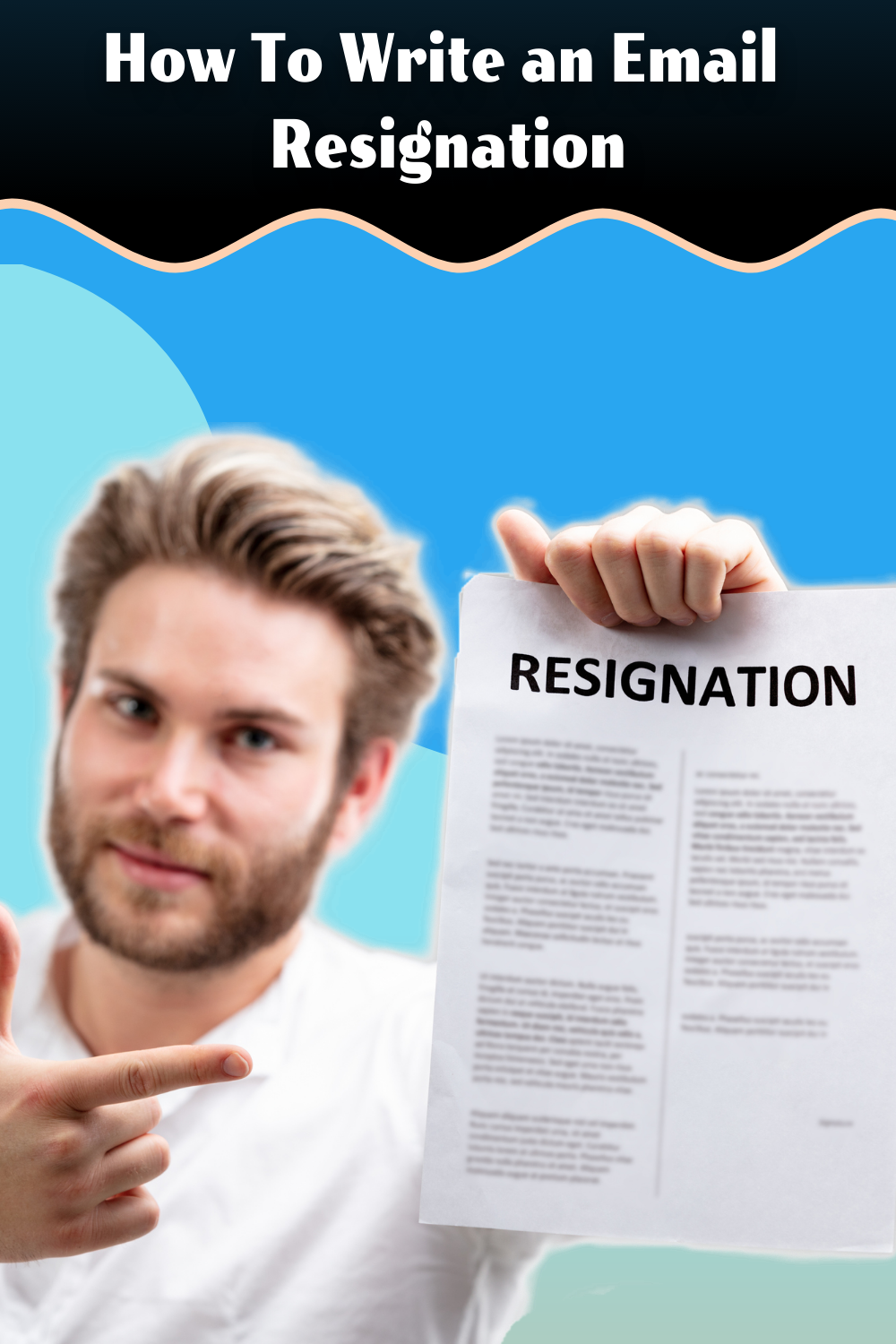When it’s time to move on to the next chapter, it can be scary to think about writing your email resignation.
You have to think about your current relationship with your employer and communicate effectively to make sure that your future is secure. Read on below to learn how to write an email resignation.
You’ll learn everything you need about what to include in the email so you can leave on a positive note.
Table of Contents
Template For How To Write An Email Resignation
Dear [Name],
I am writing to take this opportunity to let you know I will be resigning from my position at [company]. I want to thank you so much for the opportunity to work here and for everything you have done for me. I have really enjoyed my time at [company].
My last day of work will be [date].
I’ve made a plan to cover my responsibilities over the next two weeks. Below are my key projects, and team members who will be taking over. I’ve briefed each member on the details and deadlines for each project.
- Project 1/Team Member/Deadline
- Project 2/Team Member/Deadline
- Project 3/Team Member/Deadline
If there is anything I can do to make this transition as smooth as possible, please let me know.
Please feel free to reach out to me in the future as well if there are any additional questions or information that I can provide that would be helpful. You can reach me at [contact details].
Again, thank you for giving me the opportunity to learn from you and grow in this role. It has been a pleasure working with you and the team.
Best Regards,
[your name]
Why Is It Important To Write A Resignation Email?
When it comes time to leave your current position, writing a resignation email is appropriate and professional. The resignation letter is also a key piece of the human resources and recordkeeping process.
By writing a professional resignation email, you increase the chances that you’ll be able to get a favorable reference in the future, and that you’ll leave your current employer on a good note.
When Should I Send A Resignation Email?
a. You should send a resignation email only after you have had a conversation about the resignation with your boss.
You don’t want your resignation to be a surprise.
Consider the resignation email as a follow-up to our discussion with your boss.
When you speak with your boss, describe why you are leaving, show gratitude, and discuss important details, such as who will handle certain projects when you are gone.
b. You should review your company’s policies for the appropriate time to give notice.
For many companies in the United States, the standard notice period for resignation is two weeks. In some cases, the policy may be different.
For example, in some roles, such as education, it may be appropriate to give more notice so that you are not leaving mid-way through a semester or school year.
c. Try to give as much notice as possible if you are unable to give two weeks.
When you give notice early, you help your employer prepare. Early notice maximizes your chances of leaving on a positive note. If you are in a position to provide more notice, you can make the transition smoother for your employer and provide yourself with ample time to wrap up projects.
That said, make sure that you take care of important details before giving notice.
For example, if you are moving on to a new opportunity, make sure that you have a signed offer letter for your new role, secured housing (if you are moving), and a clear plan for your next steps.
What Do I Write In A Resignation Email?
Use a professional and courteous tone. Use a clear subject line such as “[Your Name] Resignation Letter”.
a. Formally state your resignation and your last day of work. For example:
Please accept this email as my formal resignation from [Company]. My last day of work will be [Date].
b. Say “Thank You”. Part of maintaining a positive working relationship is describing how grateful you are for your time at the organization, and specifically, how your boss has impacted you for the better. Here’s an example:
Thank you for giving me the opportunity to learn from you and grow in this role. It has been a pleasure working with you and the team.
c. Make a plan to hand off responsibilities.
Clearly describe key individuals and projects that are in progress, as well as your current plan to complete and hand off these projects.
I’ve made a plan to cover my responsibilities over the next two weeks. Below are my key projects, and team members who will be taking over. I’ve briefed each member on the details and deadlines for each project.
Project 1/Team Member/DeadlineProject 2/Team Member/Deadline
Project 3/Team Member/Deadline
d. Offer to assist with the transition, and provide contact details.
Here is some language you can use:
If there is anything I can do to make this transition as smooth as possible, please let me know.
Please feel free to reach out to me in the future as well if there are any additional questions or information that I can provide that would be helpful. You can reach me at [Contact Details].
e. Close with gratitude.
Thank your employer and describe how the working relationship has been beneficial. Again, this will go a long way in making sure that you have a positive future relationship.
Again, thank you for your mentorship and the excellent opportunity to work at [company].
Now that you know the key pieces of a great resignation email, you can move on to the next step with the confidence that you are leaving on a positive note.
Good luck!
If you need some pointers on how to write a goodbye email to your boss or colleagues, check out our How To Write an Email for Your Last Working Day post!

